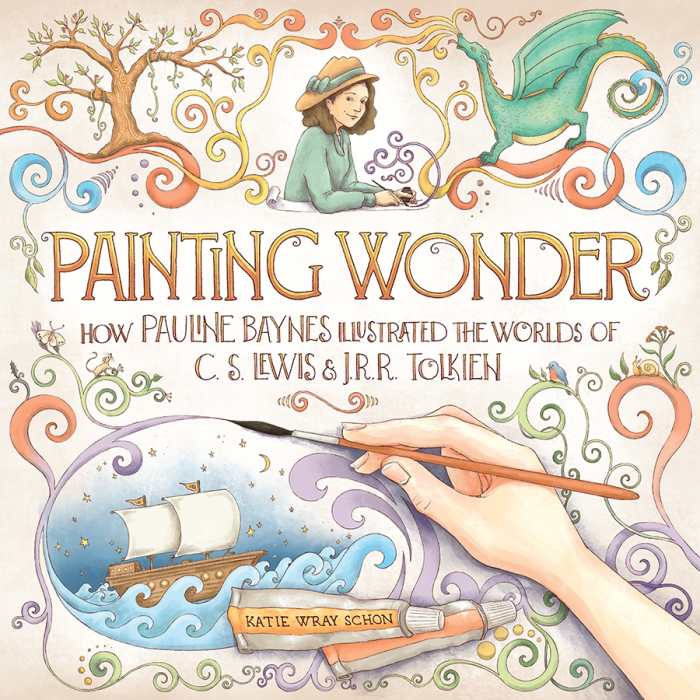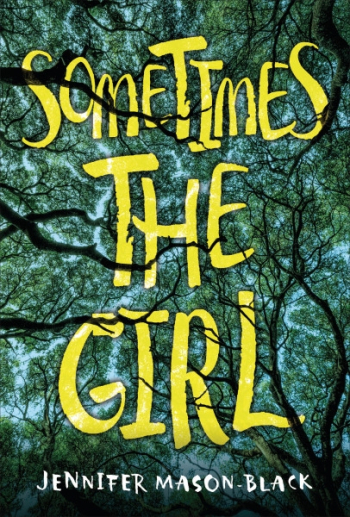Book of the Day Roundup: April 28-May 1, 2025
Painting Wonder
How Pauline Baynes Illustrated the Worlds of C. S. Lewis and J.R.R. Tolkien

Katie Wray Schon
Waxwing Books
Hardcover $18.99 (48pp)
978-1-956393-15-6
Buy: Local Bookstore (Bookshop)
In this picture book, the life and work of Pauline Baynes, the iconic illustrator of the worlds of C.S. Lewis and J.R.R. Tolkien, receive overdue credit. Though Pauline brought magical worlds to life, her own story was less fantastical: she was swept from vibrant India to England, where she was bullied and struggled to adjust. Later, she joined the war effort, making maps and charts. The illustrations bubble over with magic befitting their subject as they follow Pauline through hardship to triumph.
DANIELLE BALLANTYNE (February 17, 2025)
The Lilac People

Milo Todd
Counterpoint
Hardcover $27.00 (320pp)
978-1-64009-703-2
Buy: Local Bookstore (Bookshop)
In Milo Todd’s humane historical novel The Lilac People, a transgender man fights for the survival of his community and loved ones during World War II.
In 1932, Bertie’s work at the Institute for Sexual Science and evenings at a queer club, Eldorado, fill him with optimism about the place of transgender individuals in Germany. However, the Nazis’ rise to power is troubling. In 1945, Bertie and his lover, Sofie, have survived World War II hidden on a farm. They still hide an escaped transgender man, Karl, and consider fleeing to the US: The victorious Allied forces are reimprisoning queer individuals after liberating Nazi concentration camps.
Unwavering in its queer representation, the book’s portrayal of transgender men and their community is multifaceted. Their exuberant joy in the 1930s is affecting as they celebrate with dancing, drinking, and fireworks while singing “Das lila Lied” (“The Lilac Song”). Still, an atmosphere of unease is palpable: Intrusive voyeurs gawk at the Institute’s research, and Nazi Brownshirts spout bigotry on Berlin’s streets. The 1945 chapters bristle with intensified anxiety and uncertainty from the unexpected, violent invasions of an antagonistic American officer onto the farm.
The book’s descriptions of Nazi atrocities are heartbreaking, and Karl’s blunt, graphic recounting of surviving Dachau is haunting. Raising tough but necessary questions about complicity with persecution, Bertie suffers acute survivor’s guilt over his instincts of self-preservation when struggling against the Nazis. His empathetic, intimate thoughts reveal the queer community’s justified anger and grief over the destruction of its history and stories: “But he could never let it [his rage] out. Not satisfyingly, not effectively… It would only split him open at the ribs.”
By turns exuberant, nerve-wracking, and heart-wrenching, The Lilac People is a harrowing novel about the marginalization of queer and transgender people during World War II.
ISABELLA ZHOU (April 21, 2025)
Searching for Memory
Aluízio Palmar and the Shadow of Dictatorship in Brazil

Jacob Blanc
The University of North Carolina Press
Softcover $34.95 (304pp)
978-1-4696-8102-3
Buy: Local Bookstore (Bookshop)
A sensitive exploration of Brazilian history and the boundaries of biographical writing, Jacob Blanc’s collaborative book reconstructs the life of human rights activist and former militant Aluízio Palmar.
Born in rural Brazil, Palmar was a student during Brazil’s fateful 1964 military coup. He later became a communist activist, student organizer, and member of the militant group MR-8. After years of imprisonment and torture by the Brazilian authorities, Palmar lived as an exile in Chile and Argentina. Both countries fell to military regimes. Upon returning to Brazil, he became a journalist and activist fighting against the excesses of Jair Bolsonaro and the unresolved wounds of Brazil’s authoritarian past.
Conceived when Palmar was sued for defamation in 2019 by his former torturer, Searching for Memory reconstructs Palmar’s life with an eye cast toward the way memory coheres into particular forms of self-narration. The book draws on years of interviews and conversations with its subject as well as Palmar’s public statements to put forward the novel idea of a “memory script,” a concept that examines the significance behind the way events are remembered, recounted, repeated, and shared in public discourse. As a result, there are fluid shifts between expansive narratives that capture the sweep of history, anthropological reflections on Palmar’s stories (how they speak to larger historical realities), and self-reflections on the process of writing a biography. Palmar’s commentary on the biography itself is also woven into the text. Discrepancies in his stories are pointed out, and the process of discussing these infelicities with Palmar becomes a narrative in itself, studding the book with intimate analyses of the process of telling one’s own story.
The expansive biography of a Brazilian political activist, Searching for Memory delves into why and how memories become stories, exploring the power those stories possess.
WILLEM MARX (February 17, 2025)
Sometimes the Girl

Jennifer Mason-Black
Carolrhoda Lab
Hardcover $19.99 (304pp)
978-1-72849-329-9
Buy: Local Bookstore (Bookshop)
In Jennifer Mason-Black’s lyrical novel Sometimes the Girl, a despondent young writer goes on an “archaeological study” in the attic of a dying Pulitzer winner.
To save for a trip to New Zealand with the ex-girlfriend she still loves, Holi takes a job cataloging boxes in elderly Elsie’s attic. Elsie is famous for a book she wrote seventy years prior. Holi feels rudderless after her brother Robin’s recent suicide attempt and the death of a close friend; the distraction of unveiling what transformed a promising young writer into a cantankerous old woman leads Holi to question all she knows about death, art, and love.
Holi is mature and reflective as she extricates knickknacks and secrets alike. She asks probing questions of Elsie and herself while living in denial of devastating truths that challenge her sense of self. She thinks she has writer’s block but composes lists of her observations like poetry; she keeps hidden an uncomfortable encounter with a mentor, noting “I didn’t lead him on, and that might be the scarier thing … because if it was something I did, then I could learn not to do it.”
The closeness of Holi and Robin endears, as do keen details that evoke an impeccable sense of place in their academic town. The prose is elegant and poignant: a party noisemaker “unfurls with an unmistakable snap,” while Elsie’s attic is “a tidy landfill … a microcosm of a civilization to be unearthed.” Holi also remembers the “the little bits of [Robin’s] death refused to return” with both fondness and regret.
Sometimes the Girl is a touching coming-of-age novel about healing and connection. Holi’s story models radical empathy, and its conclusion acknowledges that language is the only tool that may bridge the gap between people who seek to understand each other.
AIMEE JODOIN (April 21, 2025)
Tsunami

Ned Wenlock
Pow Pow Press
Softcover $26.95 (270pp)
978-2-92511446-8
Buy: Local Bookstore (Bookshop)
A high school boy seeks his place in the world in Ned Wenlock’s absorbing graphic novel Tsunami.
Peter doesn’t fit in with his peers. A drawing assignment makes this clear: Gus, Peter’s neighbor, draws a wolf attacking sheep, while Peter draws a sheep surrounded by wolves and compares the predators to his classmates. Peter’s pain is relieved by his friendship with Charlotte, the new transfer student. Still, amid his parents’ marital stresses and a misunderstanding about money, Peter’s situation worsens and tensions escalate, leading to a shocking tragedy.
The book’s art is simple at first glance but proves charming and effective, conveying deep truths about the characters through their subtle and overt actions and expressions. It captures the sharp emotional swings of adolescence, as when Peter and Charlotte watch a man get tangled in his dog’s leash and fall; they both laugh, but within moments, they are overcome with sadness. Peter also grapples with the confusing complexity of mixed messages from his parents and classmates.
Pacing and foreshadowing prove key: One small event heralds others and leads to the next, resulting in momentum and a sense of a looming disaster. Throughout the book, glimpses of hope battle with foreboding, forming a compelling mystery as to how it all will end.
Tsunami is a thoughtful, affecting graphic novel about a teenager in crisis.
PETER DABBENE (April 21, 2025)
Kathy Young
